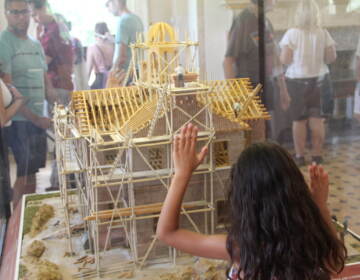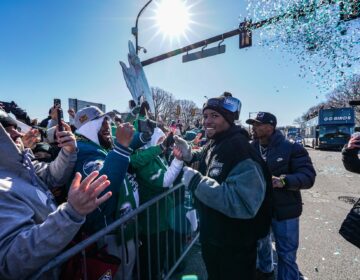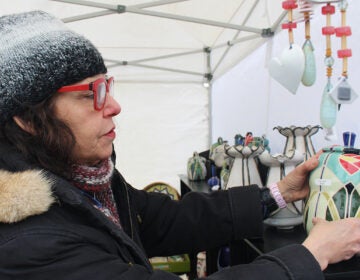Alexander Hamilton’s First Bank to become a museum of the American economy
The 1797 building in Philly’s Old City was the center of Hamilton’s national bank concept. It will house a museum of the American economy.
Listen 4:43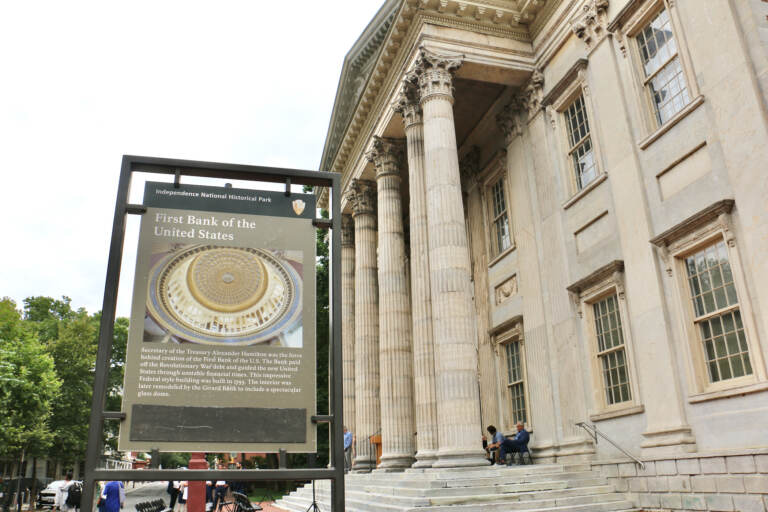
The First Bank of the United States, at the corner of 3rd and Chestnut streets, will soon begin a $50 million renovation to turn this in into a museum of the American economy. (Emma Lee/WHYY)
The house that Alexander Hamilton built may soon reopen as a public museum.
The First Bank of the United States was built in 1797 in Philadelphia to be the central hub of Hamilton’s national banking system. The Independence National Historical Park (INHP) will soon begin a $50 million renovation to turn this building on 3rd Street, across from the Museum of the American Revolution, into a museum of the American economy.
The iconic Federal-style building, which set the architectural tone of American banking for the next 200 years, has not been accessible by the public for a half-century. Park officials plan to open it in time for America’s 250th birthday celebrations in 2026.
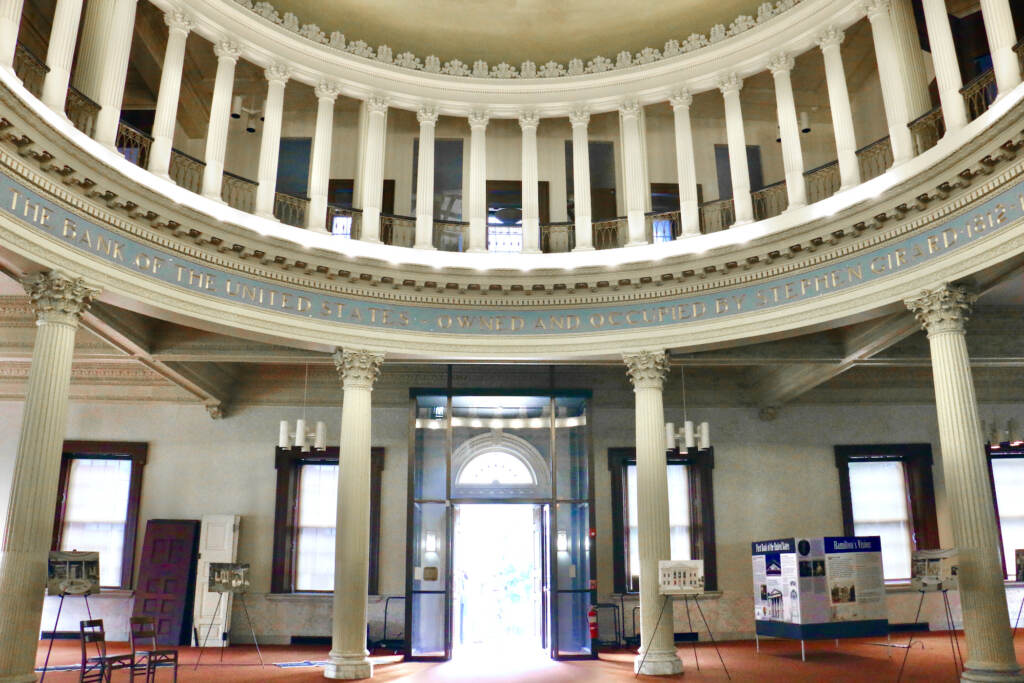
There is a dollar-sized hole in the story of the United States as it is told throughout Independence Park, said Thomas Caramanico, executive director of the Independence Historical Trust (INHT).
“We tell the story of the Declaration of Independence, the Constitution, the Revolutionary War,” Caramanico said on the steps of the First Bank, pointing to nearby historical institutions. “But we don’t tell the story of money.”
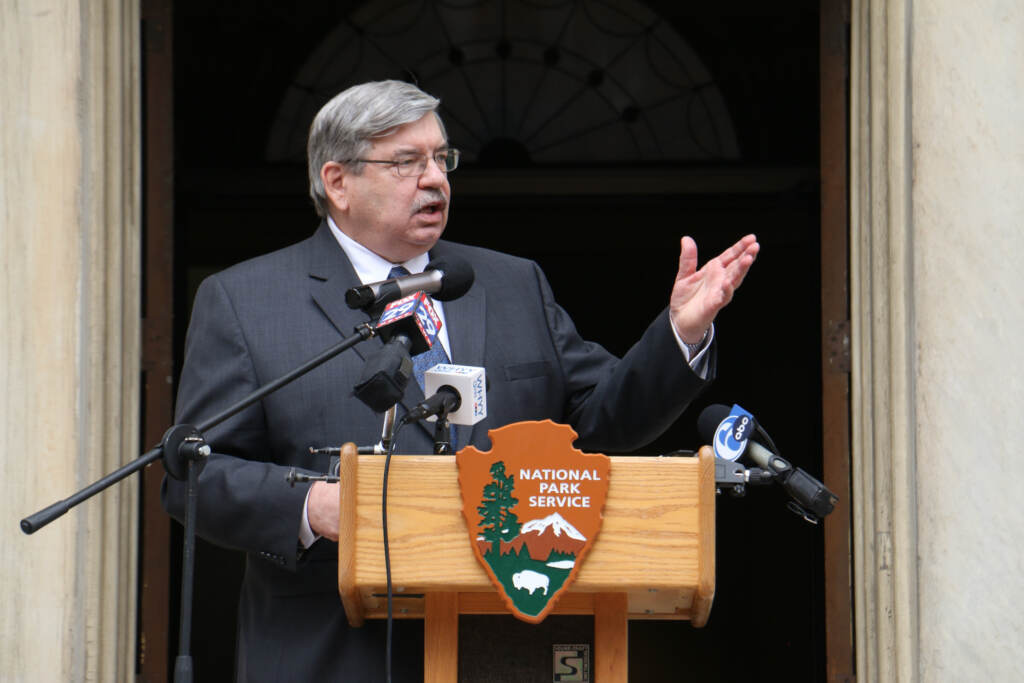
Independence Historical Trust, a philanthropic organization that supports Independence Park, has raised more than $4 million from donors toward the creation of the new museum, with another $6 million to go. That is on top of $10 million from the state of Pennsylvania as Redevelopment Assistance Capital Program (RACP) grants and $30 million in federal money, mostly from the 2020 Great Outdoors Act supporting national parks.
The concept of the First Bank of the United States was proposed in 1790 by Alexander Hamilton, then Secretary of Treasury. He butted heads with Thomas Jefferson who was vehemently against a centralized national financial institution. Nevertheless, President George Washington signed it into law in 1791 as a 20-year charter.
The short-lived financial institution was not renewed by congress in 1811. The classical Federal-style building with its two-story, fluted Corinthian columns carved from stone was swiftly bought by Philadelphia financier Stephen Girard to be the home of his private banking company. Girard made extensive renovations to the building, including its dramatic interior rotunda and glass dome.
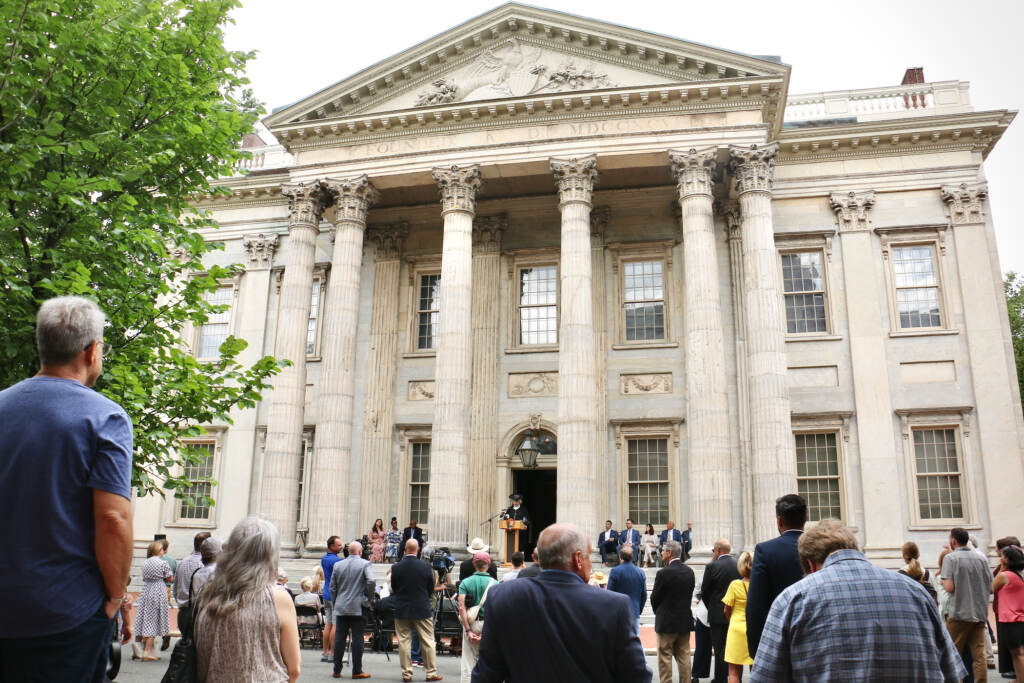
The Park Service acquired the building in the 1950s. Since the 1970s it has not been accessible by the public, aside from a few specialized tours. For the last 50 years the building has been used for internal park operations, chiefly office space and storage.
Spokesman Andrew McDougall said INHP has been looking to renovate and repurpose the building for 10 years, getting a shot in the arm with the wild popularity of the Broadway musical “Hamilton.”
“This was in the works before that came out, but that definitely did spark a lot of interest,” he said.
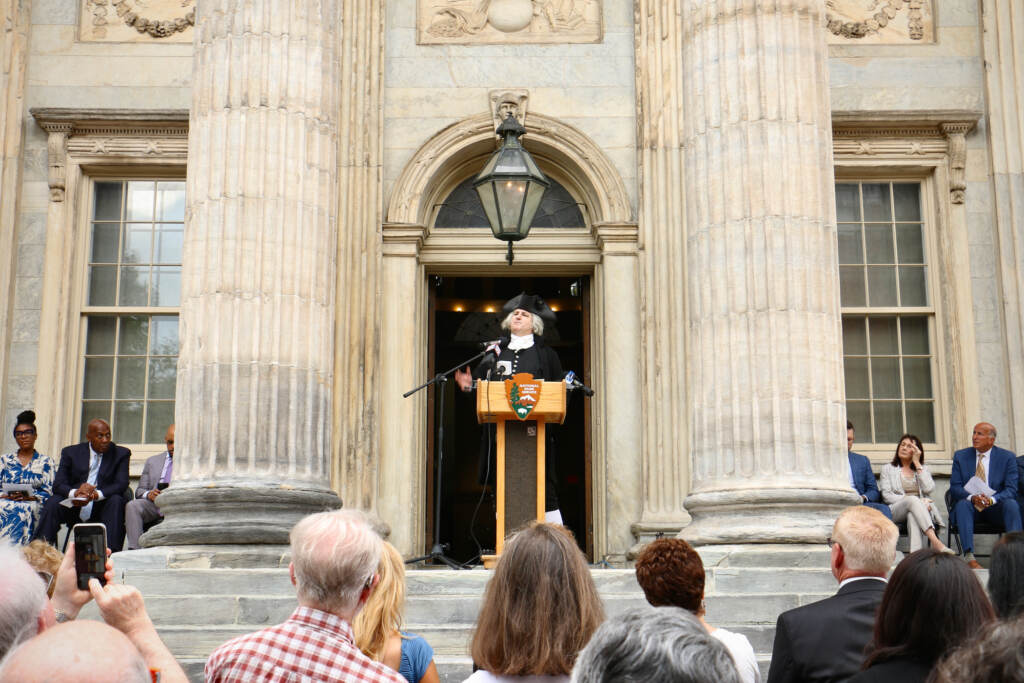
Even while closed, people seek out the building to stand on its historic stone steps.
“They want to see the exterior of Hamilton’s bank,” McDougall said. “It did a lot for the park, the same that ‘National Treasure’ (2004) did for piquing people’s interest in the story of the Declaration of Independence.”
The bones of the First Bank are in good shape.
“It withstood the test of time,” said architect Mary Werner DeNadai of the firm John Milner Architects.
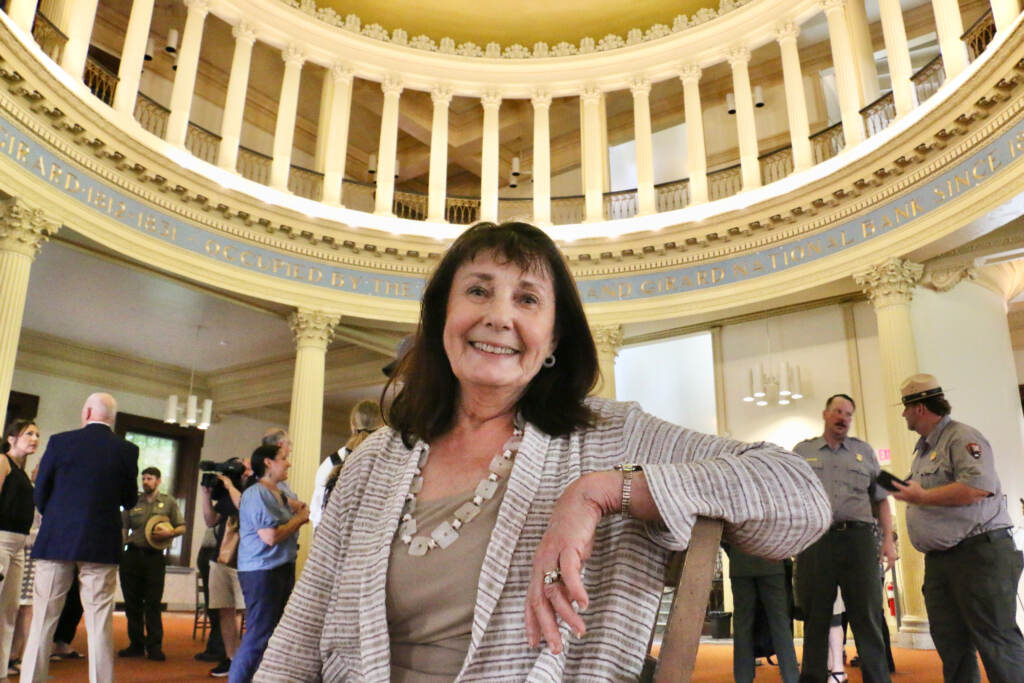
The roof will be replaced and a small annex built in the rear for mechanical systems, bathrooms, and a visitor entry point. An HVAC system will be installed throughout: in its more than 225 years the building has never had air conditioning, a fact felt acutely during a recent walk-through during a July heat wave.
DeNadai said the interior décor will be restored to the Stephen Girard era of the building, when it was installed with the rotunda and ornate ceiling trim. The basement still has the original bank vaults, which will remain for future guided tours. The existing mid-century modern chandeliers in the lobby were likely installed in the 1970s and will be removed.

While most of Independence Park’s historic tourism centers around politics and revolution, there are a few tourist attractions focused on economics, including the Federal Bank on 6th Street, and the U.S. Mint on 5th Street, which in 2012 expanded and upgraded its exhibition space. Spokesman Tim Grant said the mint averaged about 220,000 visitors a year before the pandemic.
The First Bank museum will be about more than banking, offering an overview of the history of American financial systems, including land ownership, trade, underground shadow economies, and the economic institution of slavery.
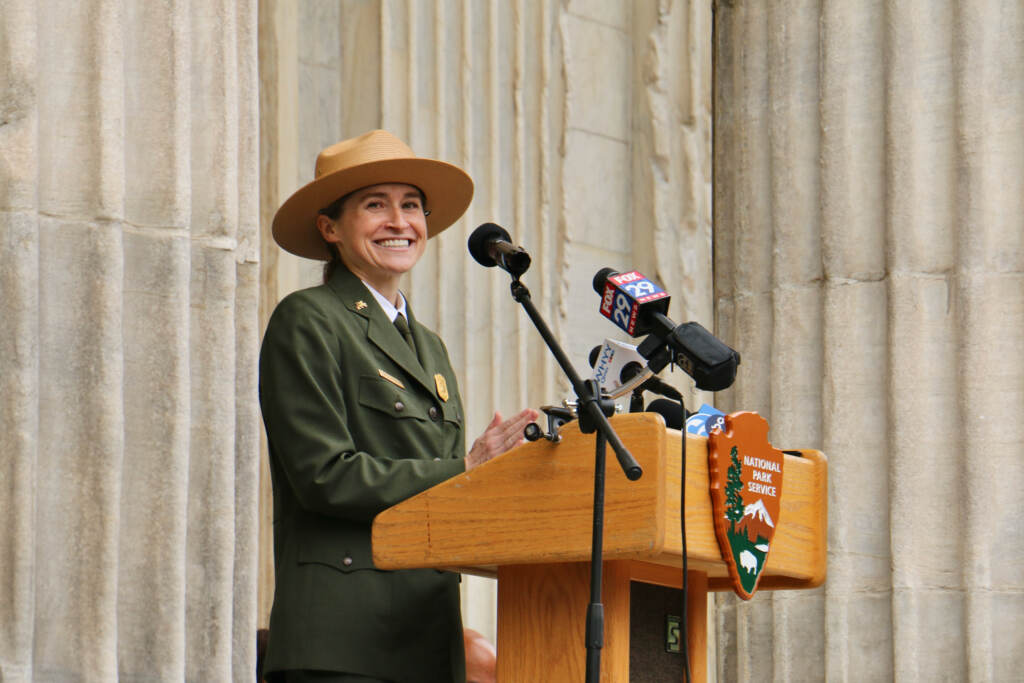
Design firm Local Projects plans to use exhibitions to tell personal stories of, for example, Little Turtle, a leader of the native Miami people who led rebellions against encroaching colonial land occupancy; Lydia Bailey, a 19th century widow who turned her late husband’s failing printing business into one of the most successful in Philadelphia; and Priscilla, an enslaved woman on a South Carolina plantation whose lifelong labor and that of her descendants contributed to the wealth of the family that owned her.
Disclosure: WHYY President and CEO Bill Marrazzo serves as chair of the Independence Historical Trust.
WHYY is your source for fact-based, in-depth journalism and information. As a nonprofit organization, we rely on financial support from readers like you. Please give today.




